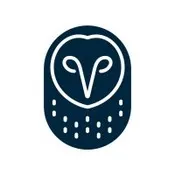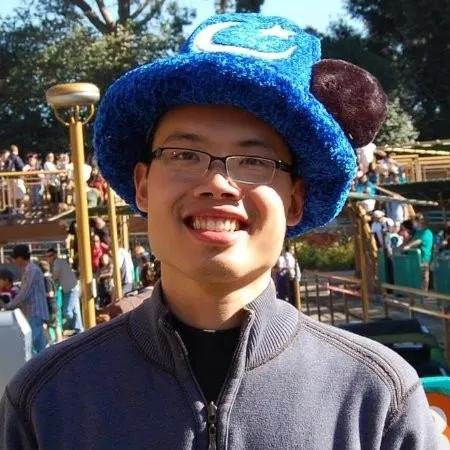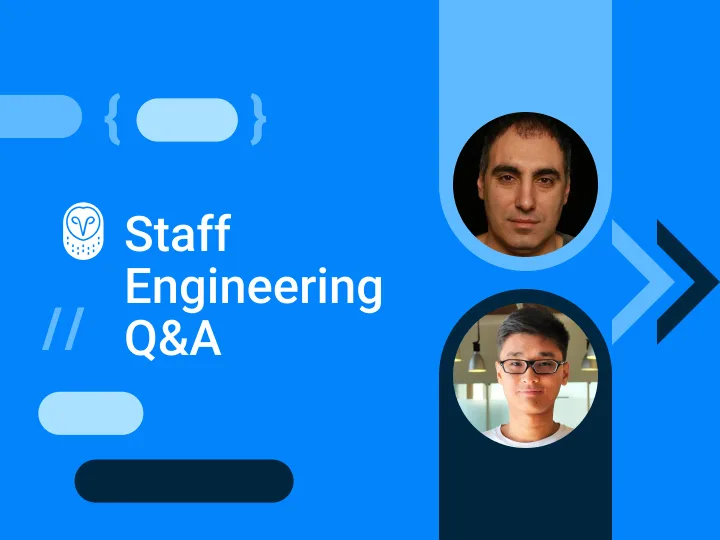
Here at Samsara, we love our people. To share what it’s like working here, we created a Dev Spotlight series to highlight members of our team. Once a month, we’ll talk to a Samsarian to learn why they’re with us, what their work is like, and what they’re all about.
Compliance with government regulations can be a complicated subject to build new features for. At Samsara, Compliance is one of our oldest product areas, and our ability to develop value for customers has played a critical role in our success as a business. We’re grateful to have an excellent team that’s able to sprint fast to support use cases while accounting for good performance and reliability.
To build a great team like this, we need great teammates — people who strive for growth, share their experiences, and lead through positive examples.
That’s why I’d like to introduce Eileen Zhong, a full-stack software engineer on the Compliance team. She’s been here for almost eight months and has already been a great example of all of the above qualities. She has experience with multiple startups prior to joining Samsara and has brought with her a hunger to learn, the ability to iterate quickly, and a warm team-player spirit. Let’s meet her :)
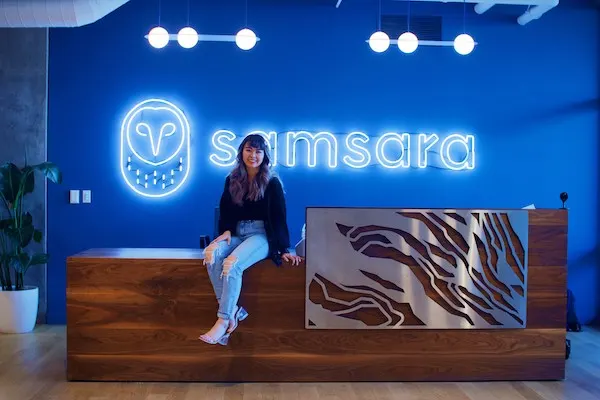
Why did you decide to join Samsara?
Before joining Samsara, I worked at a few startups with a headcount of 5 to 100 people. While the scrappy nature of these small, seed-funded companies allowed for a high degree of autonomy and a direct say in company strategies, there wasn’t a strong emphasis on best software practices or much time for mentorship. The narrow, pointed focus on finding product-market fit meant the projects themselves usually introduced net new features, leaving no room to tackle the problems that long-lived features growing at scale bring with them.
While working at my most recent company of 100 people, I improved my technology vocabulary and interpersonal skills significantly in a short amount of time. The engineering department alone was bigger than the number of people from all of my previous companies combined, which meant there were more processes in place to regulate the how-tos in building and shipping software. Code reviews taught me how my peers would approach the problem, and thus learnings from their past work experiences. I also participated in and led architecture reviews, where I picked up how to juggle caution with velocity. As I added more of these helpful tidbits to my toolkit, I knew I would benefit from joining a more mature company where I could work with, and learn from, even more engineers. I spent a couple months in 2019 interviewing and almost accepted an offer from a similarly aged company as Samsara. But at that time, I was in contact with one of my previous managers and long-time mentor Jason Symons, an engineering manager at Samsara, who, after enthusiastically describing the surreal growth at Samsara, encouraged me to apply before accepting the other offer.
To say I was impressed with everyone I met during my onsite would be an understatement. The driving factor in my decision was the bigger team with smart engineers I was eager to work with. I was excited about the IoT/fleet transportation space and Samsara’s philosophy in helping new engineers own projects and responsibilities quickly. After speaking with Faiz Abbasi and Zach Kohl, who are both Compliance team leads, about what my career at Samsara could be, I was sold. The problems sounded technically challenging, and I saw the projects I would be working on as opportunities to level up my career. I joined back in June, and Samsara has continued to go above and beyond my expectations.
What was your biggest fear before joining Samsara?
My biggest fear was having a lack of impactful and fulfilling work. I wanted to contribute quickly but also in a meaningful way — I didn’t want any throwaway work. Thankfully, my fears were quickly put to rest within three weeks of being at Samsara: when I joined a Compliance project called Short Haul.
Under normal circumstances, truck drivers can operate their vehicles for a certain amount of time, take a rest break, transition to off duty at some point, and maintain a record of these status changes. There are different levels of regulations they must comply with to avoid penalties and citations. However, drivers who qualify for the Short Haul exemption don’t have to abide by these rules because they’re driving short distances (think your local furniture delivery driver). This project was a huge undertaking with an aggressive timeline: we had to translate the inner workings of Short Haul to code, modify how our engine processed this exemption, spin up new services, allow this to be configurable for each driver by fleet managers, and break this all down into incremental deliverables.
By the end of this project, I had learned so much about the existing architecture (and caveats), worked with engineers across a number of teams, and even picked up some project management skills.
What’s your team responsible for?
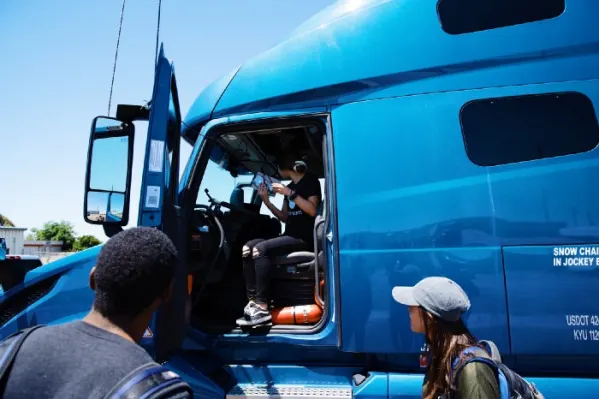
Sitting inside a customer’s truck cab!
I’m part of the Compliance team, which is one of the oldest and biggest teams at Samsara. Our team was born from the 2017 ELD mandate, written by the Federal Motor Carrier Safety Administration (FMCSA), that requires all drivers to use an electronic logging device (ELD) rather than paper logs to track their hours of service (HOS). We’re responsible for the entire ELD/HOS feature spectrum, including incorporating local/state/federal regulations for drivers’ shifts and cycles, building the right infrastructure to support our enterprise customers, and optimizing the underlying algorithms running in several of our services. More than 60% of the Samsara customer base relies on these Compliance features.
Our team is also the guardian of the waffle emoji. We’re notorious for Working from Home until Lunch, which is abbreviated as WFHUL (pronounced “waffle”). When one of us WFHULs, all of us WFHUL.

What are you currently working on?
I’m currently working on visualizing data for fleet managers to easily track their compliance health, which is composed of the volume of driver violations and the management of drivers’ hours of service. This feature required computing data for fleet and per driver aggregates and surfacing those computations through useful reports. The majority of our focus was centered around latency reduction and performance since our larger customers employed thousands of drivers. One of our project’s many goals was to accomplish a report run time of a few seconds, even for fleets with thousands of drivers and vehicles.
Just recently, we released this to our customers — I’m happy to say that our page load is only a fraction of that! Success 🎉
What makes Samsara and the engineering culture unique?
What makes Samsara unique is the people. Everyone is passionate about what they do, which is reflected in the quality of work and willingness to collaborate. Since I joined, the engineering team has more than doubled in size. Typically, when a company goes through rapid growth in a very short period of time like we did, there’s a delay to be expected in feature development velocity in order to ramp up new hires. However, the altruistic culture of teaching and guiding new hires is a tradition that has allowed us, as a company, to deliver quickly. We’ve continued to experience phenomenal upticks in employee headcount, number of office spaces around the world, and customers across different markets.
…the altruistic culture of teaching and guiding new hires is a tradition that has allowed us, as a company, to deliver quickly.
A key contributor to our unique culture is matching every new hire to be mentored by a tenured engineer. The mentor is responsible for scoping out the first few weeks, performing the initial code reviews, answering questions, and identifying resources and domain experts. This enables engineers to hit the ground running from day one. My onboarding included getting surface-level touchpoints to different layers of our stack, which helped me to understand how our systems operate and communicate. Within a couple months of joining, I mentored a new engineer hire. Through that experience, I embraced the Feynman Technique, which is a learning model based on the difference between knowing the name of something and knowing something. A gap in my explanation was an opportunity to get answers and expand my knowledge. This initiative is a two-way street, where both the mentor and mentee can learn from each other. Overall, this program accelerated our growth as a team and our capacity to take on more projects without sacrificing quality.
What’s something you’ve learned at Samsara?
I’ve always found that the best lessons don’t come from books or online resources, but from people and hands-on experiences. The great thing about working with so many talented engineers here is the diversity of problem-solving perspectives I get a glimpse of. However, not all problem-solving at Samsara is technical. In addition to discussing software design and weighing implementation trade-offs with my coworkers, we also (very seriously) strategize how to achieve our best snowboarding forms!
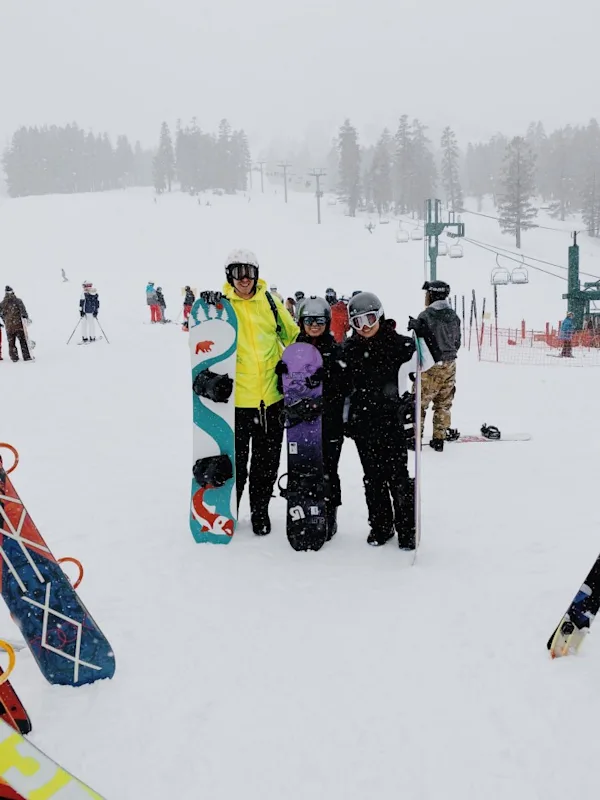
With the snowboard masters: Zack Littke-Smith and Angie Lin.
How do you hope to grow at Samsara?
Thanks to previous companies, I accrued a breadth of experience in working with the entire stack, from client and mobile to API and backend development. The way I can best grow with these technical building blocks is in the form of being an effective team player. My main focus area is learning how to effectively lead and parallelize work for more involved and challenging infrastructure projects at scale. I hope to be able to both execute and lead others on projects that span end-to-end development across multiple systems and services. Cultivating my ability to lead others through complexity is a vertical I plan to mature in here at Samsara.
Many of the projects that I’ve worked on here have already kickstarted that growth. Because the suite of Compliance features is one of the more widely used areas in the Fleet product, there are projects galore with a heavy concentration on performance considerations for our enterprise users. My goal is to continue to unlock eloquent solutions, while empowering the engineers I work with.
What’s the best advice you’ve gotten from another Samsarian?
My director, Derrek Harrison, once suggested to never leave explanations open-ended, but to make them as clear and actionable as possible. While the context of this advice was specific to effective project planning, I found this applicable to many other aspects of working in a team setting, such as collaboration efficiency, code reviews, peer feedback, and self-evaluation.
For example, rather than a hand-wavy “a few weeks” time for a timeline estimate, a quantified “X days for Y feature with Z approach” has the cascading benefit of giving stakeholders more confidence in cementing and sticking with a plan. Team members can make informed decisions on risk mitigation and engineering resource allocation, rather than tiptoeing around the what-ifs and the unknowns.
Who’s your favorite person at Samsara and why?
My favorite person at Samsara is definitely Zach Kohl! He was my mentor during my onboarding and recently transitioned to being my manager. He’s a true embodiment of what it means to be a great engineer: understanding not just the technical but also the customer and business contexts, maintaining and architecting strong foundations for software systems, and enabling team members to put their best foot forward.
I quickly realized that in addition to being extremely technically well-versed, Zach had a plethora of strengths that extended beyond writing code. One of those is his ability to formulate good questions to fill any knowledge gaps he might have. As a team lead involved in a lot of ongoing Compliance projects, he oftentimes provides behind-the-scenes guidance to all the engineers on the team. Although whatever project I was working on was only one of many on his radar, he always provided undivided attention to help me arrive at the best architecture given the project requirements and time constraints. His adeptness at asking really good questions, which forced me to step away and think about problems holistically, helped me find answers that steered me in the right direction. From working alongside Zach, I learned the power of asking good questions and their correlation with arriving at comprehensive solutions.
Interested in working at Samsara? Check out our open positions. We’re always looking for great people to join us as we learn and grow together, and if you love learning and building things in a highly collaborative environment, we’d love to hear from you!




